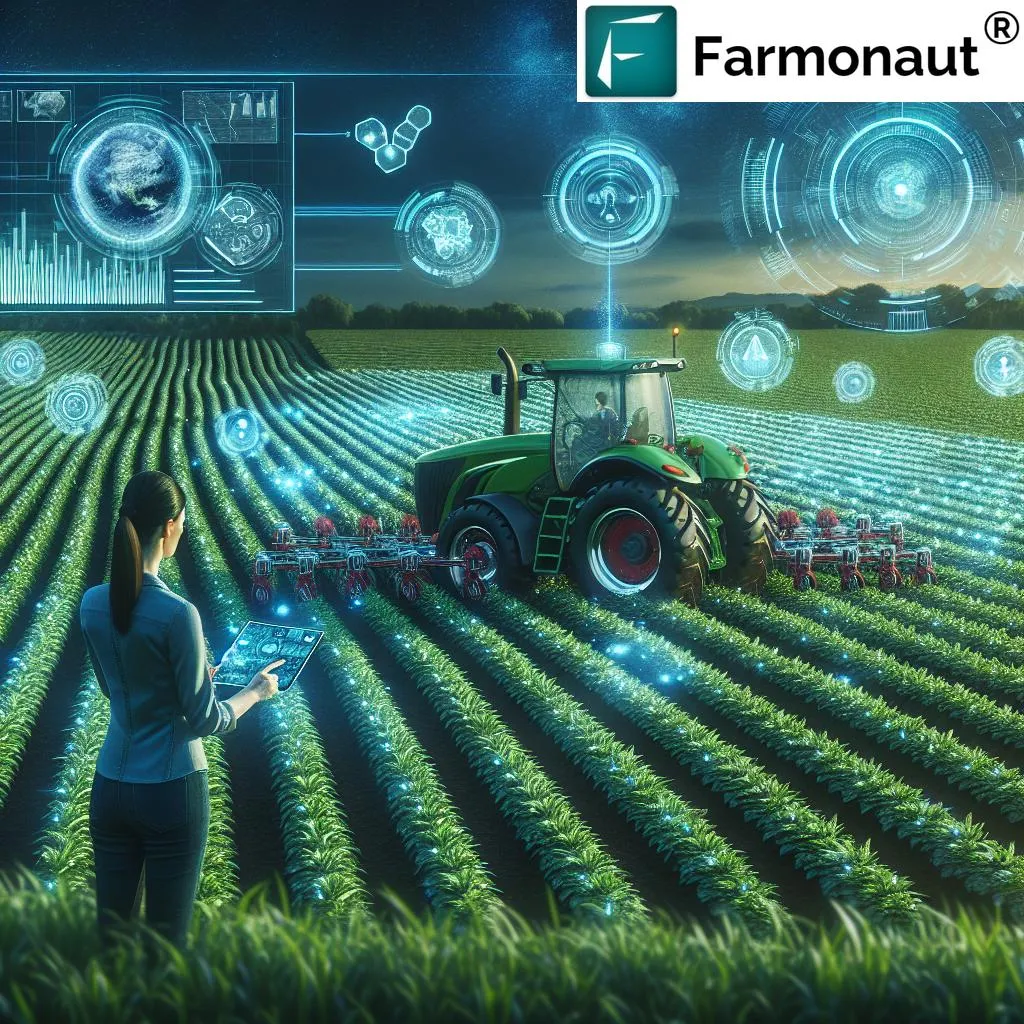In the ever-evolving landscape of agriculture, artificial intelligence (AI) is emerging as a powerful ally for farmers, offering tools and insights that transform traditional practices into data-driven strategies. AI in agriculture enables data-driven farming by leveraging real-time insights from sensors, satellite imagery, and climate models. These tools help farmers make timely, informed decisions about critical operations such as irrigation, fertilization, and harvesting, improving both efficiency and output quality. Precision technologies like Variable Rate Technology (VRT) and AI-assisted diagnostics reduce input costs, increase yields, and enhance resource efficiency, contributing to both profitability and sustainability.
Robotics and automation are transforming field operations by handling repetitive tasks such as planting, weeding, and harvesting, thereby reducing labor dependency and increasing farm productivity. Despite these advancements, adoption challenges persist due to high upfront investment costs, infrastructure gaps, concerns over data privacy, and the lack of accessible training for farmers and workers. Looking ahead, AI’s impact in agriculture will be centered on ultra-targeted interventions, adaptation to climate variability, and smarter integration across the supply chain from seed to shelf.
AI-Powered Precision Farming for Higher Yields
AI systems analyze vast amounts of data from sensors, drones, and satellite imagery to provide real-time insights into crop health, soil conditions, and resource needs. This allows farmers to identify which areas need irrigation, fertilization, or pesticide treatment, leading to optimized use of resources and improved yields. Predictive analytics help farmers make informed decisions about crop selection, planting schedules, and harvesting times by forecasting weather patterns, market demand, and commodity prices. Automation and robotics, such as autonomous tractors, drones, and smart irrigation systems, reduce labor costs and increase efficiency. Automated machinery can plant, irrigate, fertilize, and even harvest crops with minimal human intervention.
Key Applications of AI in Agriculture
AI-Driven Crop Monitoring and Soil Analysis
AI-powered computer vision systems and image-based pattern recognition identify diseases, pests, and nutrient deficiencies in crops early, allowing for timely interventions and reducing crop losses. Drones and sensors collect high-resolution images, which AI algorithms analyze to monitor plant health and growth stages. AI also analyzes soil samples to determine nutrient composition and recommend adjustments.
Smart Irrigation and Water Management
AI analyzes data from sensors, satellites, and weather stations to assess real-time soil moisture and crop needs. This enables precise application of water through automated irrigation systems, improving water use efficiency and minimizing waste.
AI-Powered Pest and Disease Detection
Computer vision and machine learning tools detect early signs of pests and diseases, enabling targeted treatments. This reduces chemical use, protects yield, and minimizes environmental impact.
Automated Harvesting and Weed Control
AI coordinates fleets of autonomous machines for harvesting and weeding. Robots identify ripe crops and perform gentle harvesting, while others manage weeds with precision tools, decreasing labor needs and enhancing productivity.
Livestock Health Monitoring with AI
AI-enabled sensors and cameras track animal behavior, feeding patterns, and mobility to detect early signs of illness or stress. This helps optimize breeding, feeding, and veterinary care to improve animal welfare and productivity.
AI for Supply Chain Optimization in Agribusiness
AI analyzes supply chain and market data to forecast demand, manage inventory, and optimize logistics. This reduces waste, enhances market timing, and improves profitability for producers.
Yield Prediction and Extension Services
AI-powered predictive models estimate crop yields with high accuracy, supporting better planning. Extension platforms use localized data to deliver personalized, real-time recommendations to farmers, improving access to agronomic knowledge and best practices.
Remote Sensing and Field Mapping
AI processes drone and satellite data to generate field maps that visualize crop variability, soil health, and growth stages. These insights guide precision interventions and large-scale crop monitoring.
Sustainable and Regenerative Agriculture
AI supports regenerative practices like cover cropping, reduced tillage, and nutrient balancing. It enables farmers to minimize inputs, conserve biodiversity, and enhance soil health through tailored, data-driven strategies.
The Economic and Environmental Impact of AI in Farming
Market Size and Growth Outlook for AI in Agriculture
The global artificial intelligence (AI) in agriculture market is experiencing rapid growth. In 2024, market size estimates range from approximately $2.08 billion to $2.18 billion. Forecasts suggest robust expansion, with the market projected to reach $6.58 billion by 2029, $7.05 billion by 2030, $12.95 billion by 2033, and $16.92 billion by 2034. Annual compound growth rates (CAGR) are consistently high, typically between 19% and 25% over the next decade. North America currently holds the largest market share, driven by strong adoption of precision agriculture and advanced technologies. This growth is fueled by rising demand for precision

